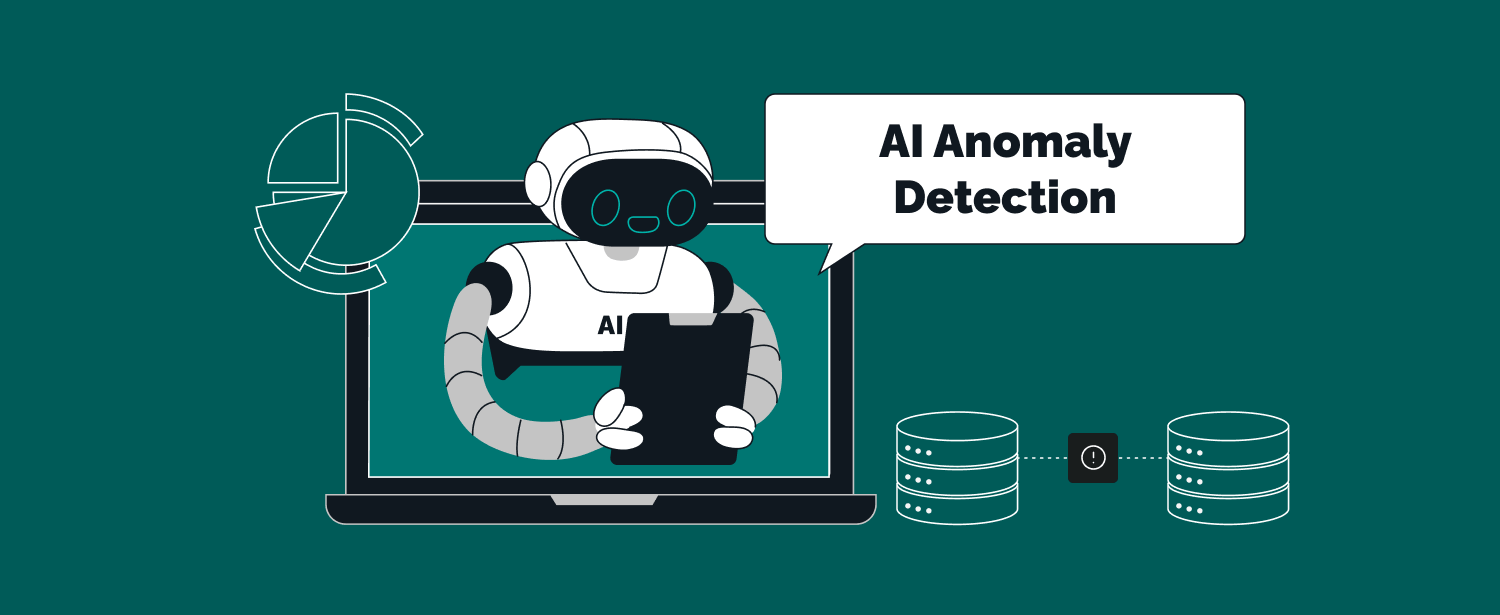In recent years, the integration of technology in healthcare has revolutionized the way medical professionals diagnose and treat patients. One of the most significant advancements in this domain is the application of machine learning (ML) techniques to detect health anomalies. As the volume of healthcare data continues to grow exponentially, the traditional methods of diagnosis are becoming increasingly inefficient. Machine learning offers innovative solutions to identify patterns and anomalies within vast datasets, leading to early detection of diseases and improved patient outcomes. This article delves into the principles of machine learning, its applications in health anomaly detection, the advantages it brings to the healthcare sector, and the future potential of this transformative technology.
Understanding Machine Learning

Machine learning is a subset of artificial intelligence (AI) that focuses on developing algorithms that allow computers to learn from data without explicit programming. By analyzing large volumes of data, machine learning models can identify patterns and make predictions based on input data. The primary types of machine learning are supervised learning, unsupervised learning, and reinforcement learning. In supervised learning, models are trained using labelled data, where the outcomes are known, allowing the model to learn the relationship between the input features and the output. Unsupervised learning, on the other hand, involves analyzing data without predefined labels, making it useful for discovering hidden patterns. Reinforcement learning is a feedback-based approach where an agent learns to make decisions by taking actions in an environment to maximize cumulative rewards.
The Role of Machine Learning in Healthcare
Machine learning has numerous applications in healthcare, particularly in the detection of health anomalies. Health anomalies refer to any deviations from normal physiological parameters, which can indicate underlying medical conditions. Traditional diagnostic methods often rely on manual analysis by healthcare professionals, which can be time-consuming and prone to human error. Machine learning streamlines this process by automating the detection of anomalies through data analysis, enabling faster and more accurate diagnoses.
Applications of Machine Learning in Detecting Health Anomalies
- Predictive Analytics: Machine learning models can predict health outcomes by analyzing historical patient data. By identifying risk factors and patterns associated with specific conditions, healthcare providers can proactively address potential health issues. For instance, predictive models can identify patients at risk of developing diabetes or heart disease, allowing for early intervention and management.
- Image Analysis: Medical imaging techniques such as X-rays, MRIs, and CT scans generate vast amounts of data. Machine learning algorithms, particularly convolutional neural networks (CNNs), have shown remarkable success in analyzing medical images to detect anomalies. For example, ML models can accurately identify tumours in radiological images, significantly improving diagnostic accuracy and reducing the time required for analysis.
- Wearable Technology: The rise of wearable health devices has facilitated continuous monitoring of vital signs and health metrics. Machine learning algorithms can analyze real-time data from these devices to detect anomalies, such as irregular heart rhythms or sudden changes in blood pressure. This capability allows for timely interventions, potentially preventing serious health crises.
- Natural Language Processing (NLP): NLP techniques enable machine learning models to analyze unstructured data, such as clinical notes and electronic health records (EHRs). By extracting relevant information from these records, ML algorithms can identify patterns and anomalies that may not be evident through structured data alone. This application is particularly valuable for recognizing symptoms that may indicate underlying health issues.
- Genomic Data Analysis: The integration of genomics and machine learning has opened new avenues for detecting health anomalies. ML algorithms can analyze genomic data to identify genetic markers associated with diseases, enabling personalized medicine approaches. This capability allows for targeted interventions based on an individual’s genetic predisposition to certain conditions.
Benefits of Machine Learning in Health Anomaly Detection
The application of machine learning in detecting health anomalies offers several benefits that enhance the quality of healthcare delivery:
- Increased Accuracy: Machine learning algorithms can analyze complex datasets with high precision, reducing the likelihood of misdiagnosis. By leveraging large volumes of historical data, these models can identify subtle patterns that may be overlooked by human analysts.
- Early Detection: Early identification of health anomalies is crucial for effective intervention. Machine learning enables the detection of anomalies at an early stage, facilitating timely treatment and potentially improving patient outcomes.
- Efficiency and Speed: The automation of data analysis through machine learning significantly reduces the time required for diagnoses. This efficiency not only streamlines the workflow for healthcare professionals but also enhances patient satisfaction by minimizing wait times for results.
- Cost-Effectiveness: By improving diagnostic accuracy and reducing unnecessary tests, machine learning can contribute to cost savings in healthcare. Early detection of diseases often leads to lower treatment costs, as conditions can be managed more effectively at earlier stages.
- Personalized Medicine: Machine learning’s ability to analyze individual patient data allows for tailored treatment plans based on specific health profiles. This personalized approach enhances the effectiveness of interventions and promotes better health outcomes.
Challenges in Implementing Machine Learning in Healthcare
Despite the numerous advantages, the implementation of machine learning in healthcare is not without challenges. These challenges must be addressed to fully harness the potential of this technology.
- Data Privacy and Security: The handling of sensitive patient data raises concerns about privacy and security. Ensuring compliance with regulations such as the Health Insurance Portability and Accountability Act (HIPAA) is critical to protect patient information during machine learning analyses.
- Data Quality and Standardization: The effectiveness of machine learning models depends on the quality of input data. Inconsistent data formats, missing values, and errors can adversely affect model performance. Standardizing data collection and ensuring data integrity is essential for successful implementation.
- Interpretability of Models: Many machine learning algorithms, particularly deep learning models, function as “black boxes,” making it challenging to interpret their decision-making processes. Healthcare professionals require transparency and explainability in models to trust their predictions and integrate them into clinical practice.
- Integration with Existing Systems: Incorporating machine learning tools into existing healthcare systems can be complex. Ensuring seamless integration with electronic health records and other healthcare technologies is necessary for effective utilization.
- Training and Expertise: The successful application of machine learning in healthcare requires a skilled workforce with expertise in both healthcare and data science. Training programs and interdisciplinary collaboration are essential to bridge this knowledge gap.
Future Trends in Machine Learning for Health Anomaly Detection
The future of machine learning in detecting health anomalies holds immense promise. As technology continues to evolve, several trends are likely to shape its trajectory:
- Increased Use of Real-Time Data: With the proliferation of wearable devices and mobile health applications, the use of real-time data for health monitoring is expected to grow. Machine learning algorithms will increasingly leverage this data to detect anomalies promptly, enabling proactive health management.
- Advancements in Explainable AI: As the demand for interpretability in machine learning models increases, research into explainable AI will advance. Developing algorithms that can provide insights into their decision-making processes will enhance trust among healthcare professionals and patients.
- Integration of Multi-Omics Data: The combination of genomic, proteomic, and metabolomic data with machine learning is likely to improve health anomaly detection. This integrative approach will facilitate a deeper understanding of diseases and enable more accurate predictions.
- Collaborative Care Models: Machine learning will play a pivotal role in fostering collaborative care models, where healthcare professionals work together with AI systems to deliver optimal patient care. By augmenting clinical decision-making with machine learning insights, healthcare teams can enhance their effectiveness.
- Focus on Health Equity: As healthcare disparities become more apparent, machine learning can help identify and address health inequities. By analyzing data across diverse populations, ML algorithms can uncover patterns related to social determinants of health, enabling targeted interventions for at-risk communities.

The application of machine learning in detecting health anomalies represents a transformative shift in healthcare delivery. By harnessing the power of data analysis, healthcare professionals can achieve greater diagnostic accuracy, early detection of diseases, and personalized treatment plans. While challenges remain in implementation, the future of machine learning in healthcare is bright, with ongoing advancements set to improve patient outcomes and streamline healthcare processes. As the integration of technology continues to evolve, the potential for machine learning to revolutionize health anomaly detection is boundless, promising a healthier future for all.




